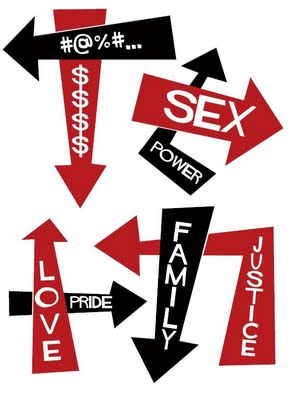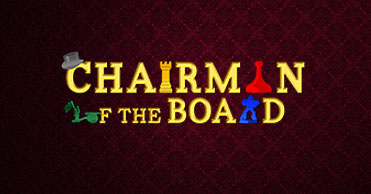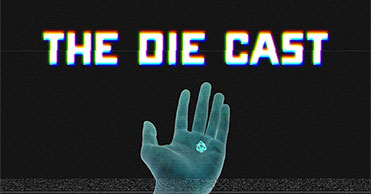It wasn’t supposed to happen like this.
My bumbling but stone-cold-evil ship captain was supposed to cross the Atlantic without a hitch. Brian’s simple-minded saboteur was supposed to sink the ship in act of petty vengeance. Chris’ eccentric detective was supposed to track down that mystical dagger that’s gone missing. And Toni…well, I’m not sure what Toni’s original plans were, but I’m fairly certain she didn’t see herself instigating the end of the world with a plot that would earn Cthulhu’s nod of approval.
In short, it was safe to call the whole thing a fiasco. Which is really appropriate since we we were playing a game of Fiasco, the brilliant and endlessly repayable indie role playing game that just-so-happens to be one of the greatest things to ever hit my table. It’s the perfect RPG for people tired of hack-and-slash fantasy. More importantly, it’s the perfect RPG for people who are completely new to this type of game.
Segue: accomplished.
Designed by Jason Morningstar, Fiasco is a RPG that’s about as far from a session of Dungeons & Dragons than you can possibly imagine. More like a loosely structured combination of writer’s room and improv exercise than a typical game, Fiasco asks three to five players to build a perilous, verge-of-disaster style situation before gleefully tearing it down. Although the rule book cites the pitch-black comedies and noirs of the Coen brothers as a chief influence, the game is only limited by the imaginations of the players, with the group around the table building a story that can be realistically devastating or completely out of this world.
Did my latest group set out to tell a story that felt like a Marx brothers comedy written by HP Lovecraft? No, but it’s what emerged organically from all of us putting our demented, beer-drenched, horrifyingly immature brains together.
The real beauty of Fiasco is that it offers seemingly unlimited depth from a very simple framework of rules. First, players select a Playset, AKA, the setting in which your tale of woe and mayhem will take place. Some of these are simple (“A Nice Southern Town”) and some get awesomely specific and niche (the De Medici family in Renaissance Italy), but with dozens of official and unofficial sets available for free online, you’ll surely find one that appeals to your group. Then you roll a whole bunch of dice in the middle of the table and must use the available numbers to build a web of relationships, needs, objects and locations that tie everyone at the table together. Eventually, every player at the table will be connected in perilous, unstable, selfish and hilarious ways, with a story already beginning to emerge.
 If you and the player to your left share a crime relationship and and a need to get revenge on a family member, then maybe the guy you want to take down is the player to your right, who has been established as your father-in-law. And maybe that player is the mayor, who shares some shady blackmail photos with the player to her right. You can already see the possibilities, and that’s only the tip of the iceberg when it comes to the web of relationships you’ll build.
If you and the player to your left share a crime relationship and and a need to get revenge on a family member, then maybe the guy you want to take down is the player to your right, who has been established as your father-in-law. And maybe that player is the mayor, who shares some shady blackmail photos with the player to her right. You can already see the possibilities, and that’s only the tip of the iceberg when it comes to the web of relationships you’ll build.
And then it’s all carefully plotted chaos from there (or not so carefully plotted, depending on your group). Players take turns establishing scenes, with everyone roleplaying their characters as they pursue whatever it is that they’re after (the more selfish and petty the better). Outcomes of scenes are decided by the non-active players handing out black or white dice, deciding whether or not a scene ends well or poorly for the subject. It’s a brilliant system — if you want your character to succeed at his plans, you’ve got to captivate the rest of the table and convince them that your scene should end well.
There are no winners or losers in Fiasco — it’s all just group storytelling, with the goal being to create the most twisted and imaginative tale possible. There are a few other rules (the “Tilt” introduces new twists halfway through the game, and the “Aftermath” is a brilliant mechanic that has everyone creating an end-of-movie montage of what happened to the characters), but they exist simply to facilitate your story and keep things interesting.
To give you an idea of Fiasco’s range, here are a few of the stories I’ve created with my friends using this system:
A young minister attempts to take down his boss, who may or may not have taken advantage of a young boy years before, by corrupting a church volunteer into seducing him and exposing him for what he is. Meanwhile, the now-grown victim grows increasingly close to a breakdown.
An antarctic research base is visited by a FBI agent, who suspects that the installation’s military commander is an impostor (Spoiler: he is). Things get complicated when the FBI agent’s petty, vengeful girlfriend is revealed to be working on the base alongside an innocent young intern, who the fake commander manipulates into helping silence the agent once and for all.
And, of course, there’s the game I described at the top of this very column, where the passengers on board a 1932 transatlantic cruise liner engaged in a plot so bizarre and meta that it all-but-demands Graham Chapman to march into the plot and announce that it’s all too silly. I can’t help but imagine Morningstar seeing this particular session and sighing the deepest or sighs, but damn it, fun is fun and I’ve yet to play a game of Fiasco where I haven’t enjoyed myself.
The most miraculous thing about Fiasco (besides its slim but seemingly limitless rule book) is what a truly collaborative and positive experience it is. Although the stories you generate tend to range dark to uncomfortably bizarre, few games will make you laugh as much and fewer games will push you to be so creative. With no game master, Fiasco allows everyone to work together, pausing scenes to ask for suggestions and letting players throw out suggestions from the sidelines. Shy players needn’t worry — Fiasco may ask you to play a character, but it never puts you on the spot. There is no wrong way to play. There is only bullshitting with your buddies. And your bullshit will occasionally be hilarious. Sometimes, it’ll be compelling and dramatic. Hell, a game with a few vets can be an unexpectedly moving experience.
If you’re a writer or an actor or a creative person in general, there are few games that’ll scratch your itch to create as well as Fiasco. If you like your games rigid and enjoy a clear sense of direction with obvious goals and a winner and some losers, this is not for you. All I can say is that I regularly think about the stories I’ve created in Fiasco. I wonder what would have happened if my character had been more sympathetic or a little less selfish. I wonder what would have happened if the dice had rolled a little differently and I was an upstanding businessman and not a crack dealer. I wonder if we were too harsh on a character and that giving him a black die and damning him to a painful beat-down at the hands of the Mexican mafia was the wrong decision.
Most of all, I wonder when I can play again.
While I have your attention, I’d like to use this space to introduce you to Chairman of the Board’s companion audio show, The Die Cast. You can find additional information about the show and this episode in particular over at its main page, but here are the basics: for our debut episode, I sat down with One Of Us champions Brian Salisbury, Chris Cox, Toni Taylor-Salisbury and Ashley Moreno for a round of Fiasco. Things got really weird. They also got a little drunk. Then they got pretty nonsensical, offensive and slightly incomprehensible. We do not mean half of the things we say. We are so sorry.
In the future, the Die Cast will include additional RPG sessions (including more, er, controlled Fiasco), interviews with game designers and scintillating conversation about the latest and greatest in the tabletop gaming world. In the meantime, enjoy our debut episode and don’t be afraid to let us know what you think in the comments below!


